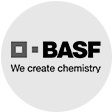Feature pest control | PPC90 March 2018
Sharon Hughes, Global Technical Marketing Manager of Rodenticides at BASF, considers how the proposed reduction in the concentration at which anticoagulants are used may impact on resistance and selection for resistance in house mice and Norway rats.

Anticoagulant resistance only develops where anticoagulants are used. Non-anticoagulant baits are equally as effective against both anticoagulant susceptible and resistant infestations. Using an efficacious non-anticoagulant bait will prevent resistance development within infestations. An example of a non-anticoagulant active already on the market is alphacholorolose which is for mice only. Looking forward, the active cholecalciferol, for use against both rats and mice, is on the horizon and is expected in the near future.
As we are aware, from 1 March 2018 rodenticide anticoagulant baits sold for use by amateurs must contain less than 30ppm of the active substance. Baits containing 30ppm or greater will be labelled “may damage the unborn child” and will only be available to professional pest controllers.
Even though professionals are qualified to use the greater than 30ppm baits, I can foresee that in certain environments their customers may request, or risk assessments carried out by the pest controller may lead to, professionals using baits at the lower concentration level of less than 30ppm. Therefore, exactly how widespread the use of baits at the lower concentration will actually be is difficult to determine. But a question that needs to be asked is what will be the impact of this reclassification on the control of anticoagulant-resistant rats and mice and the future selection for resistance rodents?
For the less potent first-generation anticoagulant baits these would not be efficacious at the less than 30ppm level, so this will not be an option. For second-generation anticoagulant baits, the vast majority contain 50ppm of active (difenacoum, bromadiolone, brodifacoum or flocoumafen), with the exception of difethialone baits which already contain 25ppm. For existing bromadiolone, and to a lesser extent difenacoum baits, there is evidence of resistance to these two actives in both rats and mice, and the incidence of resistance is growing including in areas where it was not previously known to exist. It seems that the more we look for resistant rodents, the more we find, so the full extent of resistance to these two molecules is unknown. As there are already problems with resistance to difenacoum and bromadiolone baits when the active substance content is 50ppm, there are concerns that a reduction of this to less than 30ppm may result in even further selection in favour of anticoagulant resistant rats and mice. A situation we would not wish to see develop.
However, for the more potent second-generation anticoagulant baits, those that contain either brodifacoum, flocoumafen or difethialone as the active substance, there is no practical resistance to these baits and they are effective in controlling rats and mice resistant to other anticoagulant baits. The degree of potency of bait containing these actives means that the development of practical resistance to brodifacoum, flocoumafen or difethialone is not expected. So what about baits containing the reduced level of one of these more potent anticoagulants? For baits containing any of these three actives, reducing the active concentration to less than 30ppm would mean that they are still effective against rats and mice resistant to other anticoagulants and hence should not be selected for these resistant rodents.
BASF will launch a 25ppm flocoumafen bait as its ‘less than the 30ppm’ bait, and is currently in the EU authorisation process. We chose this potent, single-feed active and developed a highly palatable bait, with our studies demonstrating robust efficacy against both rats and mice including those that are anticoagulant resistant.
 Sharon Hughes
Sharon Hughes
Global Technical Marketing Manager of Rodenticides, BASF
1 March 2017 | PPC90
Source: PPC90